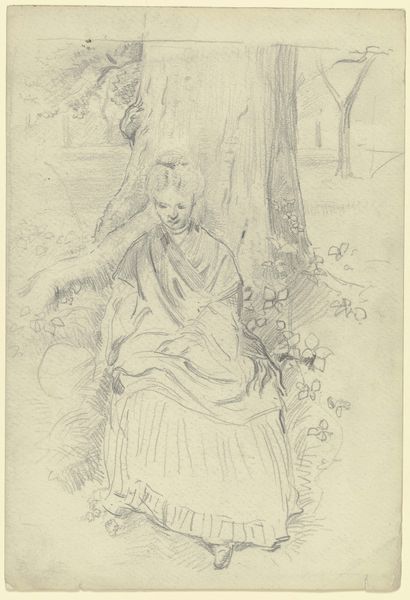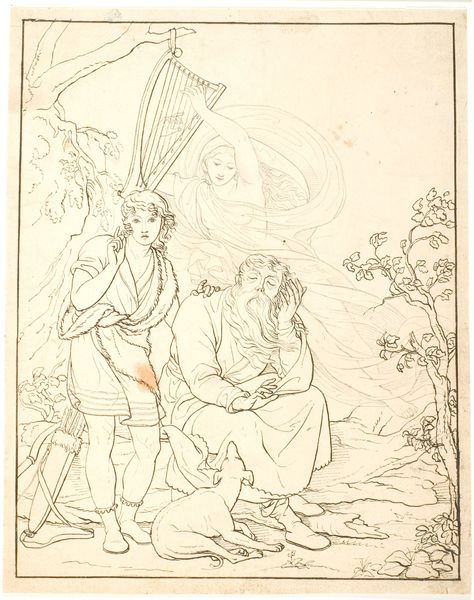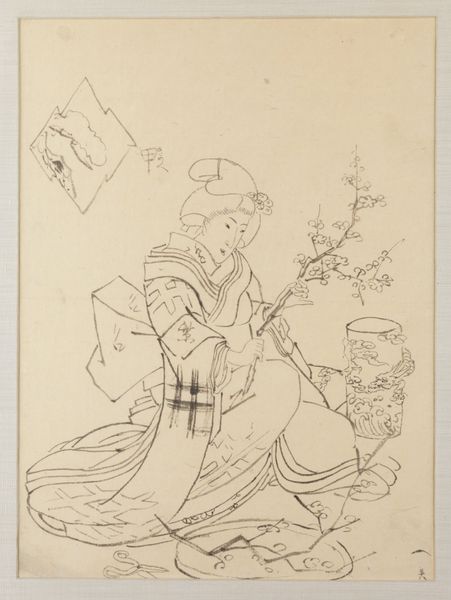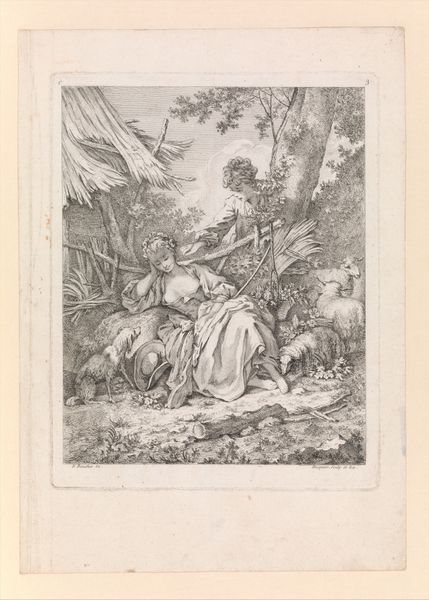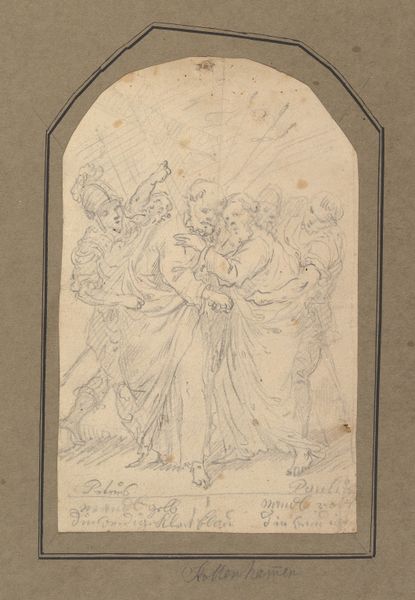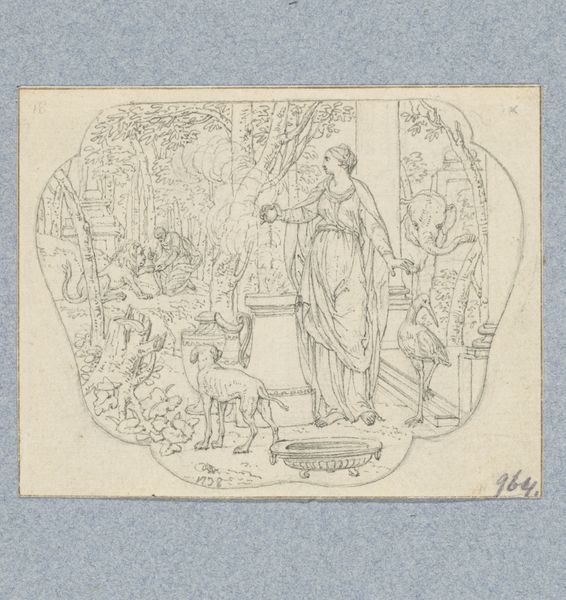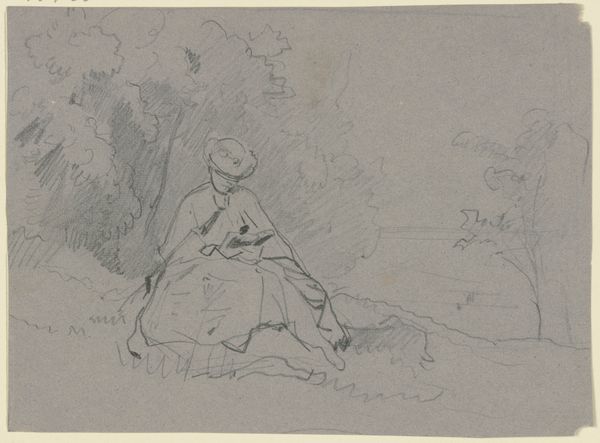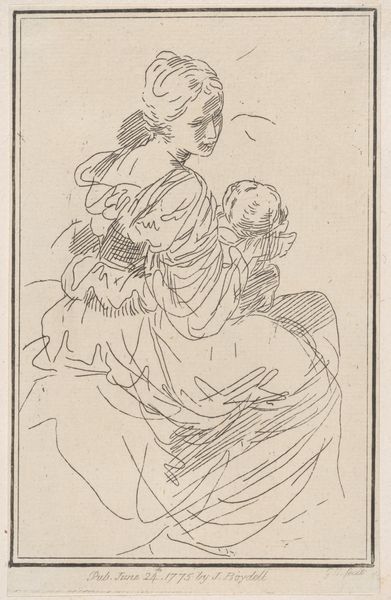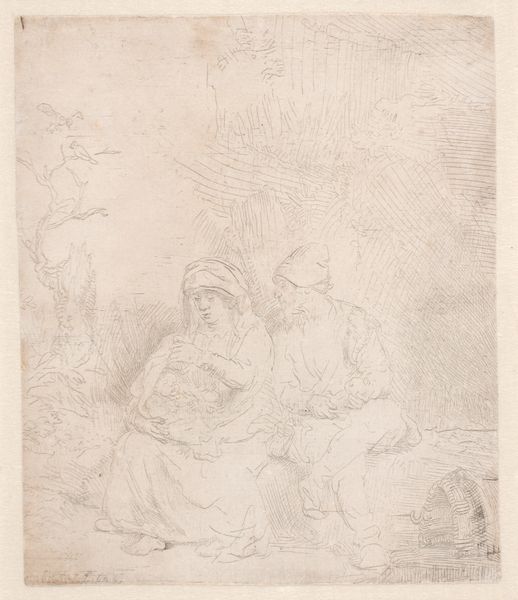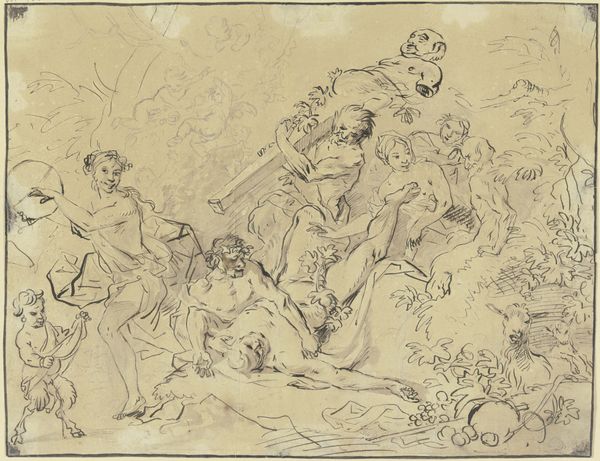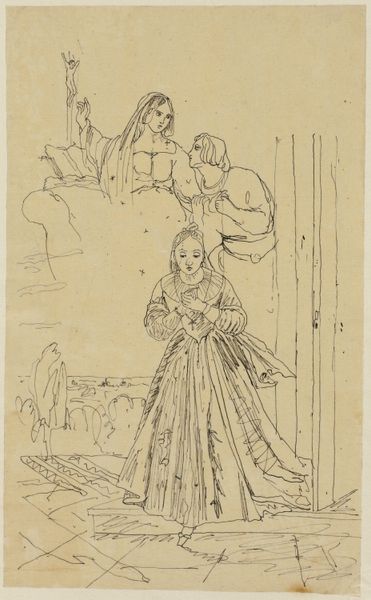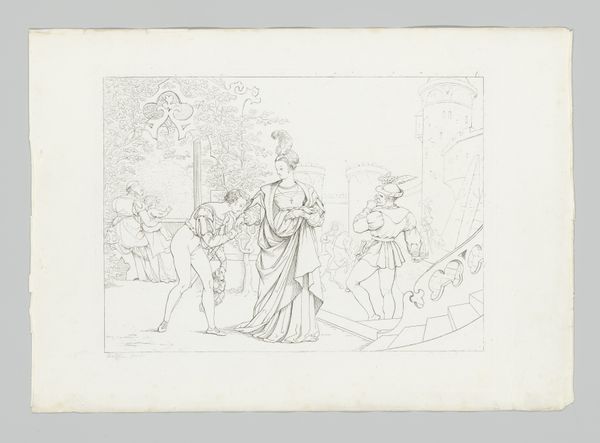
Peasant Girl Riding an Ox with Companions 1715 - 1770
0:00
0:00
drawing, print, paper, pencil, pastel
#
portrait
#
drawing
# print
#
pencil sketch
#
landscape
#
figuration
#
paper
#
pencil
#
genre-painting
#
pastel
#
rococo
Dimensions: 9 1/16 x 7 1/16 in. (23 x 18 cm.)
Copyright: Public Domain
Curator: Well, here we have Francois Boucher's "Peasant Girl Riding an Ox with Companions," created sometime between 1715 and 1770. It's currently residing at the Metropolitan Museum of Art. Editor: It’s all so...sketchy. In a charming way, like catching a fleeting moment in the countryside. The light is soft, and everything feels rather dreamy. Curator: Indeed. It's a drawing, using pencil and perhaps some pastel on paper, giving it that airy, preliminary feel. Boucher, known for his Rococo style, often depicted scenes of pastoral life. The image almost idealizes rural life, doesn't it? It’s got a certain sweetness that glosses over the tougher realities. Editor: Sweet but also strange, no? I mean, an ox as transportation seems almost theatrical, an elegant peasant. It speaks to this Rococo idea of playing at being a shepherd, removing any of the genuine grit from agriculture. What about these characters in the shadows though, they are intriguing. Curator: Precisely! The artwork flirts with social realities while ultimately embracing fantasy. This blurring was fashionable among the aristocratic patrons. They consumed art as entertainment and a reflection of their privileged worldview. These shadow-cast characters enhance the romantic nature of the composition while reinforcing a status of peasantry removed from nobility. Editor: Absolutely. It makes you think about who this was really for. What did this fantasy do, politically, for those consuming the image and those within? There's a definite performance of "country life" happening, like an 18th-century influencer showcasing an idyllic, unrealistic lifestyle. Curator: The way Boucher captured movement and light, though…that skill can't be denied. This snapshot reveals the artifice that's ever-present within idealized genre scenes of the period. Editor: A revealing, imperfect vision indeed. It makes you ponder the nature of nostalgia and how we romanticize aspects of the past that weren’t always so romantic in their day. Curator: A poignant reminder that even seemingly innocent scenes have stories lurking beneath the surface.
Comments
No comments
Be the first to comment and join the conversation on the ultimate creative platform.
